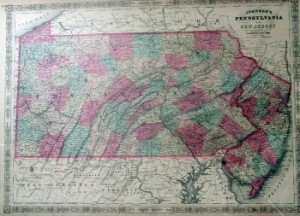 While abolitionist sentiment, having created the Republican Party of Abraham Lincoln and hastened the demise of the old Whig Party, is now reflected in popular Northern thought, many white Northerners remain opposed to official government efforts to put an end to African slavery. Lincoln’s reluctance to issue a formal emancipation proclamation evidences this reality.
While abolitionist sentiment, having created the Republican Party of Abraham Lincoln and hastened the demise of the old Whig Party, is now reflected in popular Northern thought, many white Northerners remain opposed to official government efforts to put an end to African slavery. Lincoln’s reluctance to issue a formal emancipation proclamation evidences this reality.
Nonetheless, the Northern political ground is shifting, as even conservative Unionists are beginning to recognize the need to eradicate African slavery in order to advance freedom in America. While many white Baptists in the North have by now long been abolitionists, others have resisted such efforts. Today, Baptists of Pennsylvania’s Clarion Baptist Association voice the ideological transition that many conservative white Baptists of the North are undergoing.
Writing to President Lincoln, Clarion Association Baptists express the common sentiment–North and South–of slavery as the cause of the war, then continue:
… we see not how our Government can interfere directly with the system … in the revolted, more than in the Loyal Slave States … [and] are glad of its uniform and steadfast refusal to do so … [yet Clarion Baptists] rejoice in the indications that God in his Providence, is about to make … a great step [to end African slavery] …
Hesitant for their government to enforce what they see as the will of God, Clarion Baptists give voice to a growing moral chorus for the ending of African slavery. Lincoln has already decided that government action is needed to bring about this moral imperative. As he awaits the opportune time to join government force with moral–and religious–ideals, the words of Pennsylvania’s Clarion Baptists offer assurance that more white Northerners are recognizing that the institution of African slavery must come to an end.
Source: Clarion Baptist Association to Abraham Lincoln, August 23, 1862, cited in William A. Blair, Karen F. Younger, Lincoln’s Proclamation: Emancipation Reconsidered, editors, University of North Carolina Press, 2009, pp. 490-491 (link); map image (link)


